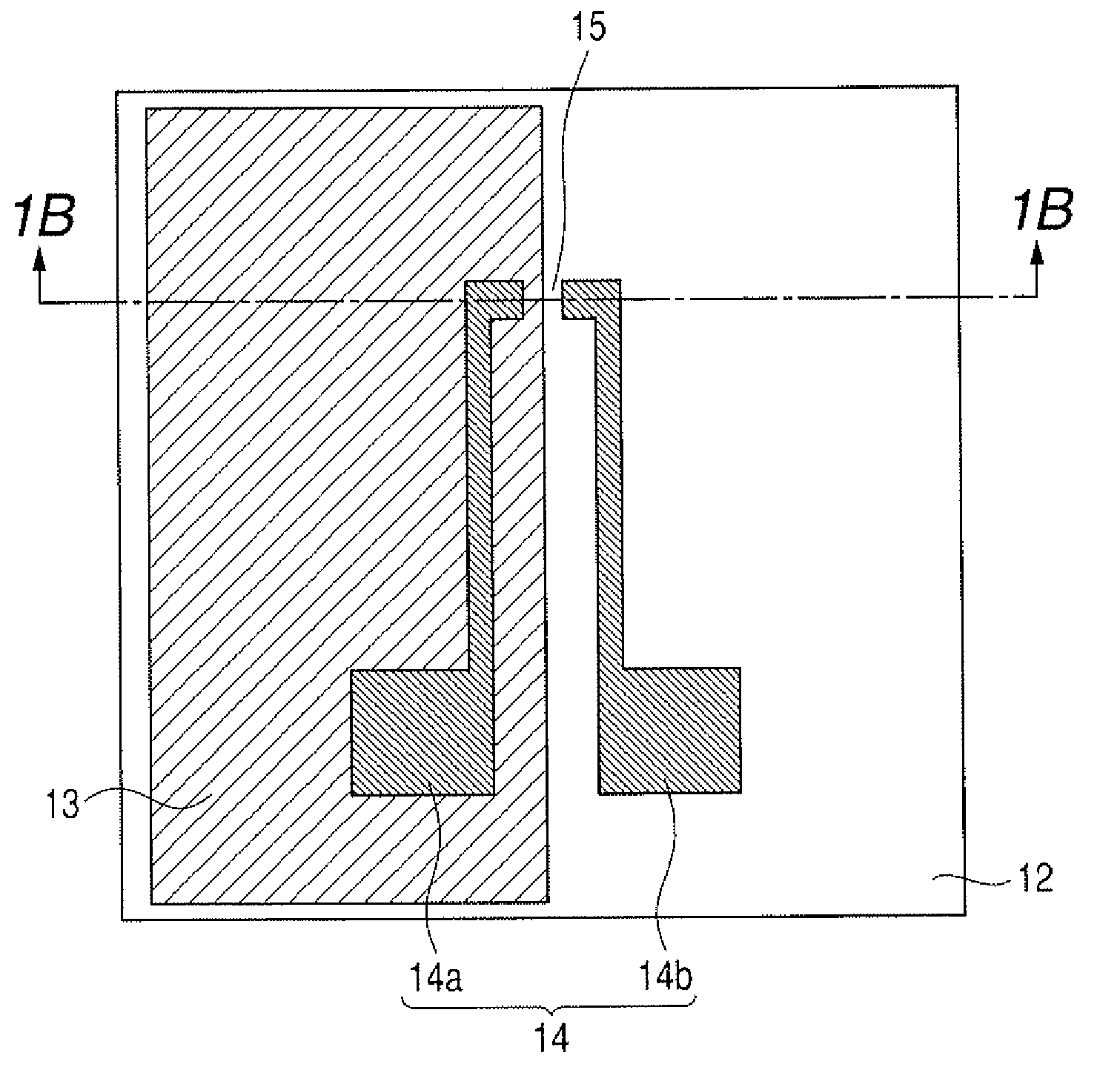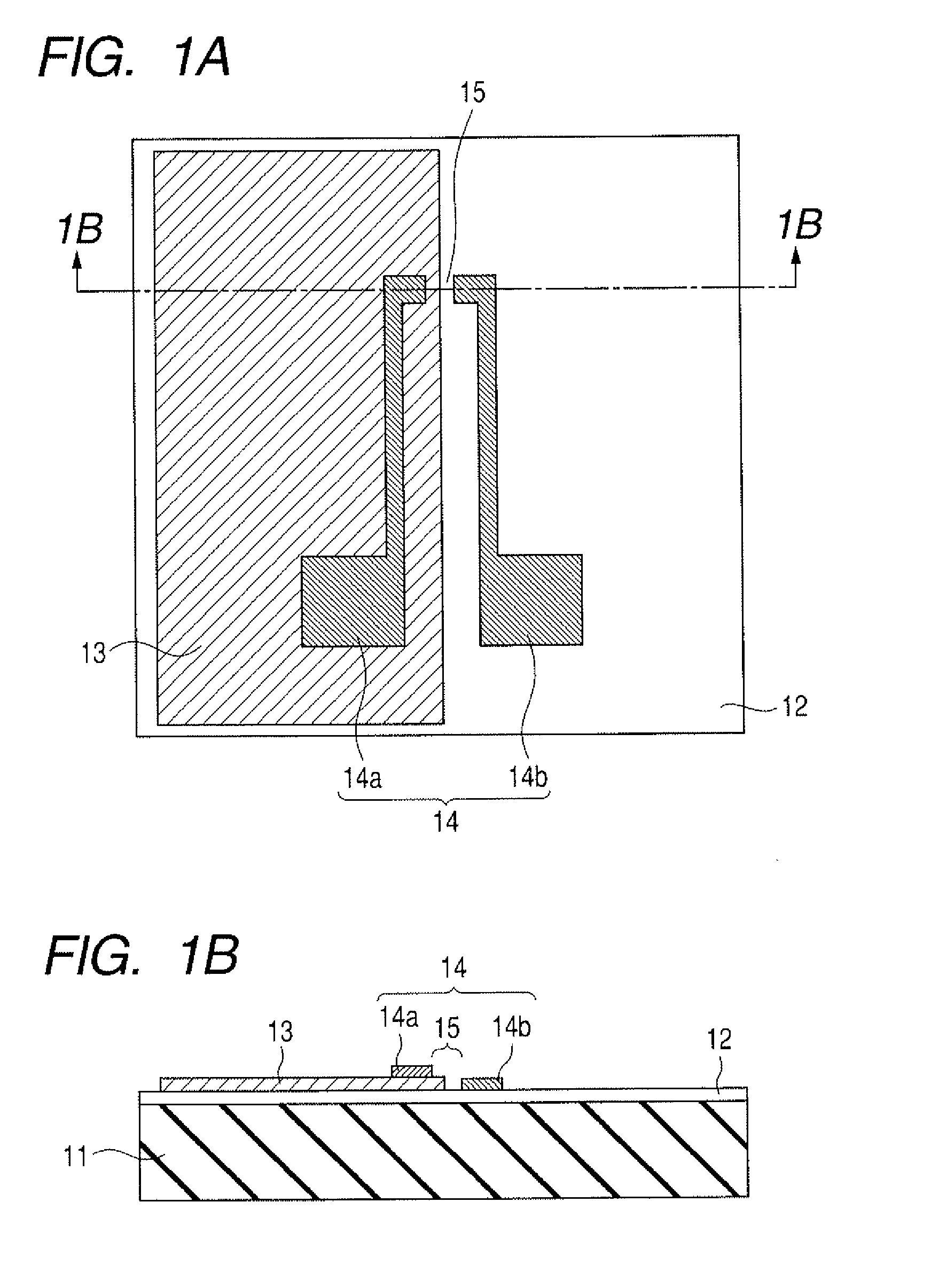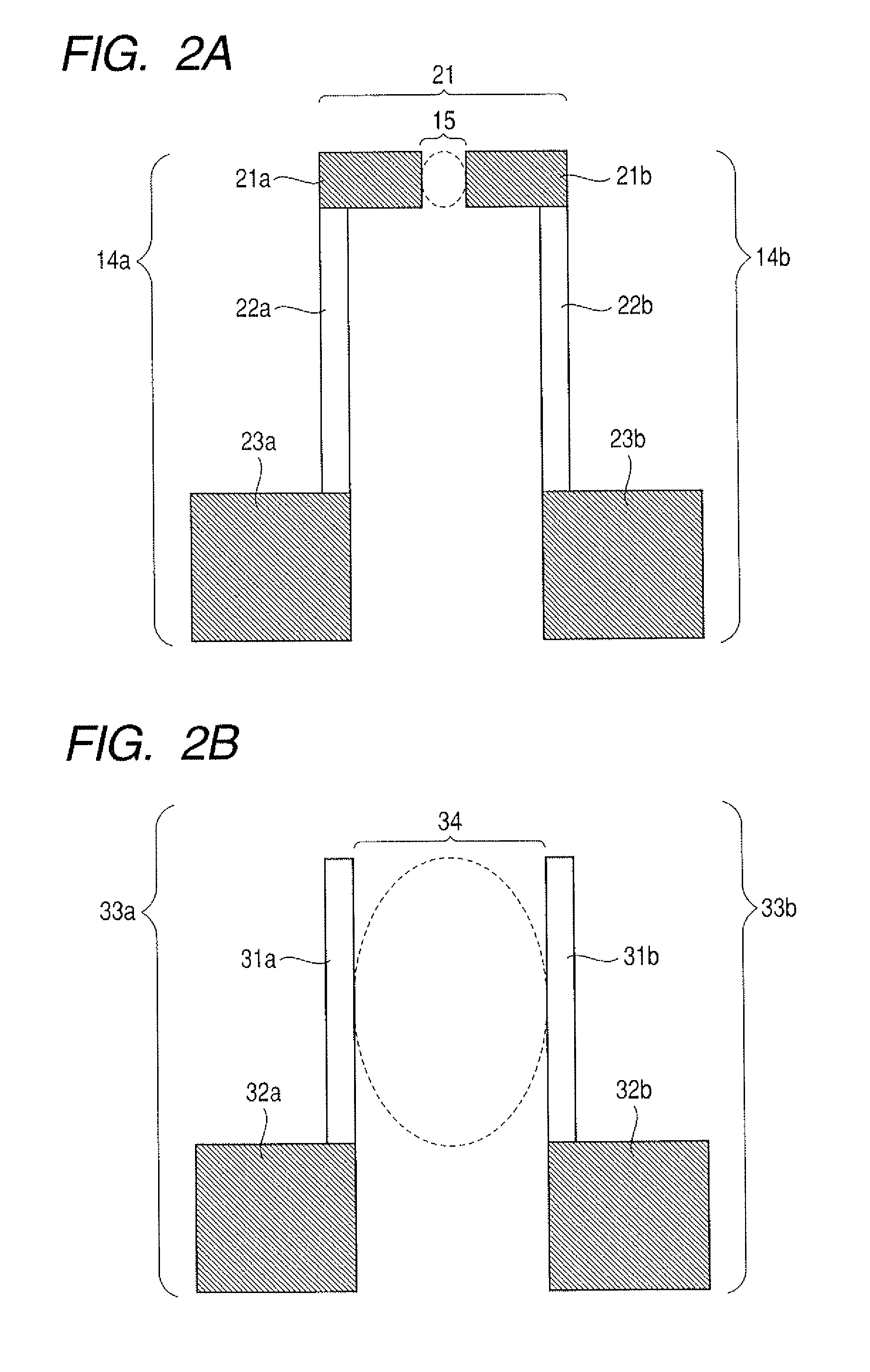Photoconductive device
- Summary
- Abstract
- Description
- Claims
- Application Information
AI Technical Summary
Benefits of technology
Problems solved by technology
Method used
Image
Examples
example 1
[0060]As shown in FIGS. 1A and 1B, in Example 1, a semi-insulating (SI-) InP substrate is used as the substrate 11. Further, an InGaAs thin film, formed on the SI-InP substrate 11 by epitaxial growth at about 250° C., is used as the photoconductive portion 12. Then, to adjust (increase) electric resistance, the InGaAs thin film 12 may be doped with Be in a concentration of about 1017 to about 1018 cm−3. The high resistance portion 13 is formed of a silicon nitride thin film or the like. The silicon nitride thin film 13 desirably has a thickness of less than 200 nm in order to obtain a moderate electric resistance. Moreover, the silicon nitride thin film 13 favorably has a higher resistance than the InGaAs thin film 12.
[0061]As shown in FIGS. 1A and 1B, the silicon nitride thin film 13 is formed so as to cover half of InGaAs thin film 12 by using plasma CVD, a photolithography, a dry etching method or the like. Subsequently, first and second conductive portions 14a, 14b formed by lam...
example 2
[0070]Example 2 of the present invention is described. In the present example, a mixture in which a small amount of metal particles are mixed in a dielectric is used as the high resistance portion in the terahertz wave generating device that has been described in Example 1.
[0071]Example 2 is described by using reference numerals given to the structure shown in FIGS. 3A and 3B. For example, MgF2 is deposited on the photoconductive portion 52 and subsequently gold is deposited thereon to about 10 nm. When the gold is about 5 nm to about 10 nm, a so-called island structure is formed rather than a uniform thin film. In island structures, striped gold clusters are formed in various places. Again, a series of the following steps are repeated: MgF2 is deposited again; and gold is deposited thereon to about 5 nm to about 10 nm. Such repetition results in the formation of network in MgF2 where gold clusters are connected. Therefore, an object having moderate electric conductivity is formed. ...
example 3
[0072]Example 3 of the present invention is described with reference to FIGS. 4C and 4D. A terahertz wave generating device which is a photoconductive device of the present example as shown in FIG. 4C and FIG. 4D which is a cross section view taken along line 4D-4D of FIG. 4C includes a substrate 91, a photoconductive portion 92, a high resistance portion 93, and first and second conductive portions 94a and 94b. The photoconductive portion 92 is provided in contact with at least a part of the upper surface of the substrate 91. The photoconductive portion 92 is not formed by a crystal growth on the substrate 91 but a thin film formed by a crystal growth on another substrate and attached onto the substrate 91. Thus, the photoconductive portion 92 employs a so-called thin-film transfer technology.
[0073]The material of the substrate 91 has a high transmittance for a terahertz wave. Such materials, for example, include high resistance silicon, quartz, polyethylene, polystyrene, fluorine-...
PUM
 Login to View More
Login to View More Abstract
Description
Claims
Application Information
 Login to View More
Login to View More - R&D
- Intellectual Property
- Life Sciences
- Materials
- Tech Scout
- Unparalleled Data Quality
- Higher Quality Content
- 60% Fewer Hallucinations
Browse by: Latest US Patents, China's latest patents, Technical Efficacy Thesaurus, Application Domain, Technology Topic, Popular Technical Reports.
© 2025 PatSnap. All rights reserved.Legal|Privacy policy|Modern Slavery Act Transparency Statement|Sitemap|About US| Contact US: help@patsnap.com



